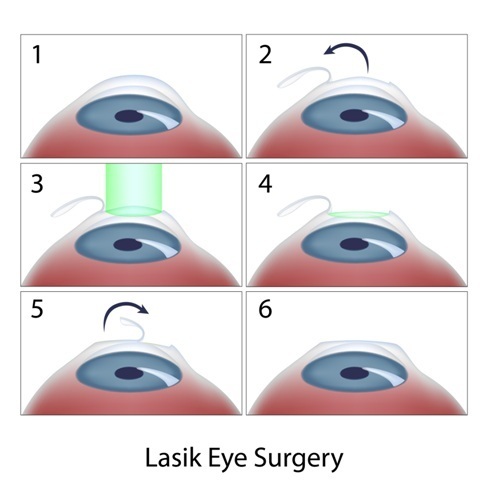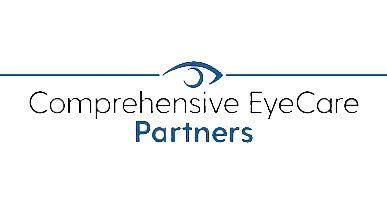Are you looking for an alternative to contact lenses or glasses? A vision correction procedure like PRK, LASIK, or the EVO ICL may suit you.
With one of these procedures, you can achieve sharper, clearer vision without prescription glasses or contact lenses. All three are effective and boast high patient success and satisfaction rates.
Keep reading to learn more about PRK, LASIK, and the EVO ICL and which could be right for you.
What is LASIK?

LASIK is a laser vision correction procedure that addresses refractive errors, including farsightedness, astigmatism, and nearsightedness. Refractive errors occur when your eyes don’t bend or refract light like they should, leading to blurry vision.
LASIK alters the shape of your cornea to improve how light hits the retina, helping you see more clearly. LASIK starts with your LASIK surgeon at Evergreen Eye Center numbing your eyes using anesthetic eye drops.
You may also receive a light sedative to help you relax. Your LASIK surgeon will then keep your eyes open by gently placing a lid speculum over your eyelids.
The speculum will not be uncomfortable or painful. Your LASIK surgeon will also place a suction ring on your eye to prevent it from moving, which will also not hurt.
You may feel some slight pressure while they use the suction ring. Next, they will use a femtosecond laser to create a flap on the outermost layer of your cornea, called epithelium.
They will lift the corneal flap and carefully fold it back to expose the stroma or underlying corneal layer. Using an excimer laser, your LASIK surgeon will reshape your stroma by removing microscopic amounts of corneal tissue.
Changing the shape of your cornea enables your eyes to properly refract light, leading to crystal-clear vision. Once your LASIK surgeon has made the necessary adjustments to your cornea, they will smooth over the flap, finishing the LASIK procedure.
No sutures are needed, as the incision that created the flap self-heals. LASIK is performed in less than 30 minutes and done on both eyes.
Who is a Good LASIK Candidate?
LASIK may be right for you if:
- You’re 18 or older
- Your pupils are a standard-size
- You’re not pregnant or nursing
- Your prescription is within LASIK’s treatment limits
- Your corneas are a sufficient thickness
- You’ve had a stable prescription for at least one year that’s remained unchanged
- You haven’t undergone a previous eye procedure or had an eye injury that could make having LASIK risky
- You don’t have eye conditions like chronic dry eye, keratoconus, cataracts, macular degeneration, or glaucoma
More than 90 percent of patients achieve 20/20 vision or better after LASIK, and nearly 99 percent end up with 20/40 or better.
What is PRK?
PRK is a refractive procedure that uses lasers to modify the shape of your cornea and correct refractive errors, including farsightedness, nearsightedness, and astigmatism. PRK is an excellent alternative if you don’t qualify for LASIK because of:
- Thin corneas
- Chronic dry eye
- Very large pupils
- Playing contact sports like boxing or martial arts
During PRK, your surgeon will administer special eye drops to numb your eyes. The drops will ensure you don’t feel pain during the vision correction procedure.
Your surgeon will also place a lid holder on your eye to keep your eye open. They will then completely remove the epithelium using an alcohol solution, special brush, laser, or blade.
Unlike LASIK, no flap is created during PRK. Next, your surgeon will use an excimer laser to sculpt your stroma.
Altering the shape of your cornea allows light entering your eye to be directed appropriately to your retina, permanently correcting your vision. After reshaping your cornea, PRK is complete, and no stitches are needed.
The epithelium regenerates in a few days. PRK is completed in approximately 15 minutes.
Who is a Good PRK Candidate?
You may be a suitable candidate for PRK if you meet the following criteria:

- You’re 18 years or older
- You’re not pregnant or nursing
- Your prescription hasn’t changed for at least 12 months and has remained stable
- You don’t have eye conditions like keratoconus, cataracts, or glaucoma
- You’re free of medical conditions like diabetes, arthritis, or autoimmune diseases
PRK and LASIK have similar outcomes, with an overall success rate of about 95 percent. Nearly 70 percent of PRK patients attain 20/20 vision, while 92 percent achieve 20/40 or better.
What is EVO ICL?
If your prescription is too high or your corneas are too thin for LASIK, the EVO ICL may be right for you. The EVO ICL is a vision correction procedure that addresses nearsightedness and astigmatism.
EVO is short for evolution, while ICL stands for implantable collamer lens.
Unlike PRK and LASIK, the EVO ICL is an additive lens that addresses nearsightedness and some astigmatism without reshaping the cornea.
The EVO ICL corrects your vision in a similar way to a contact lens, except it’s implanted inside your eye. It helps your natural lens refract light that enters your eye so that it focuses properly on your retina, providing clear vision.
The EVO ICL is made of a biocompatible material called collamer derived from collagen. Because collamer is in natural harmony with your eyes, it works together with them. During the procedure, your eyes will be numbed using anesthetic eye drops for a painless experience.
Your surgeon will then make an incision in your cornea and insert the EVO ICL through the incision. Your surgeon will then properly position the EVO ICL between your natural lens and iris, which is the colored part of your eye.
You won’t be able to feel or see the EVO ICL after it’s inserted. The procedure is complete once the EVO ICL is implanted in your eye. No stitches are required because the tiny incision heals on its own.
The EVO ICL only takes 10 to 15 minutes per eye, and most patients experience improved vision right after the procedure.
Who is a Good EVO ICL Candidate?
You may be a candidate for EVO ICL if you meet the following criteria:
- You’re in good health
- You’re not pregnant or nursing
- You have healthy eyes without pre existing eye conditions
- You’re between 21 and 45 years old
- You have moderate to severe nearsightedness
- You have maintained a stable prescription for at least a year
The EVO ICL has an incredible patient satisfaction rate of over 99 percent. Patients love the EVO ICL for many reasons, including offering freedom from glasses or contacts.
After EVO ICL, you can look forward to crisper, clearer, high-definition vision than what you had with visual aids. In addition to providing sharper vision, the EVO ICL offers excellent night vision and UV protection.
Because no corneal tissue is removed when the EVO ICL is implanted, the procedure won’t cause dry eye, a typical side effect patients often experience after laser vision correction procedures. Moreover, the EVO ICL is permanent yet removable.

Unlike LASIK or PRK, the procedure is completely reversible at any point. If, for any reason, you and your eye doctor decide to remove the EVO ICL, it can be taken out at any time, offering much-needed peace of mind.
See the World with Crystal Clear Clarity
At Evergreen Eye Center, our expert surgeons have years of experience performing vision correction procedures that can help you achieve the vision of your dreams.
Are you ready to experience the best vision of your life? Schedule your appointment today at Evergreen Eye Center to determine which vision correction procedure can help you achieve visual freedom. Isn’t it time for better vision?

